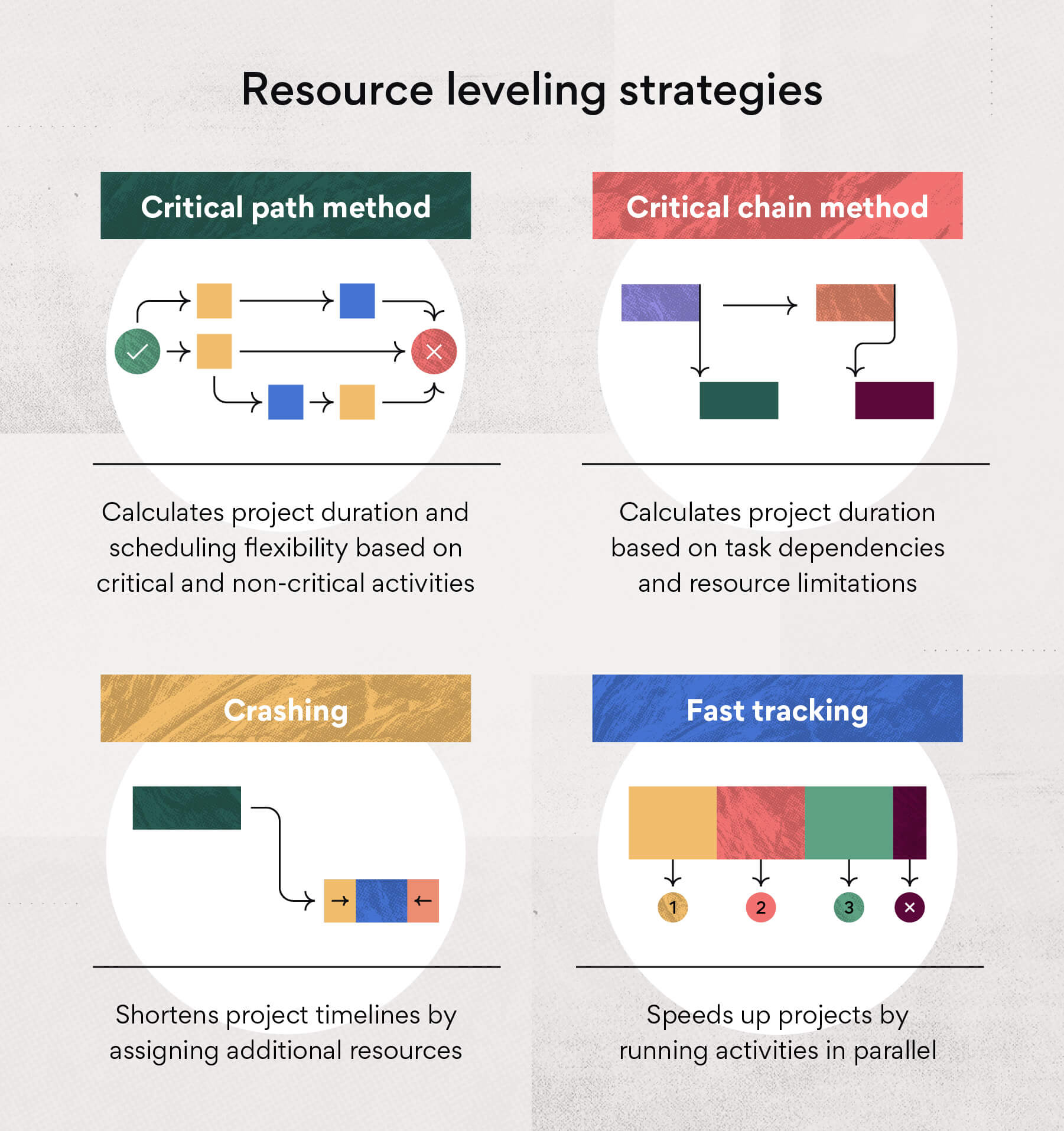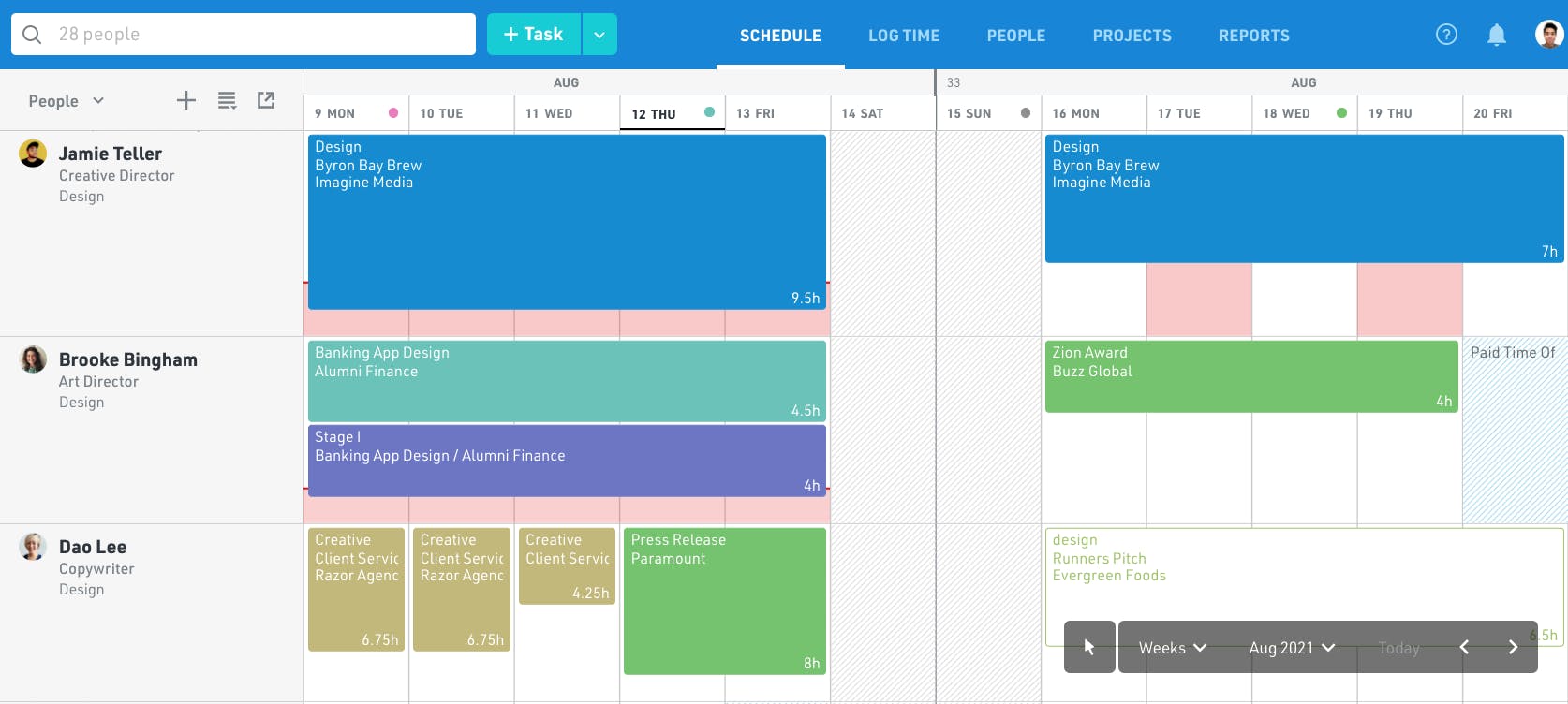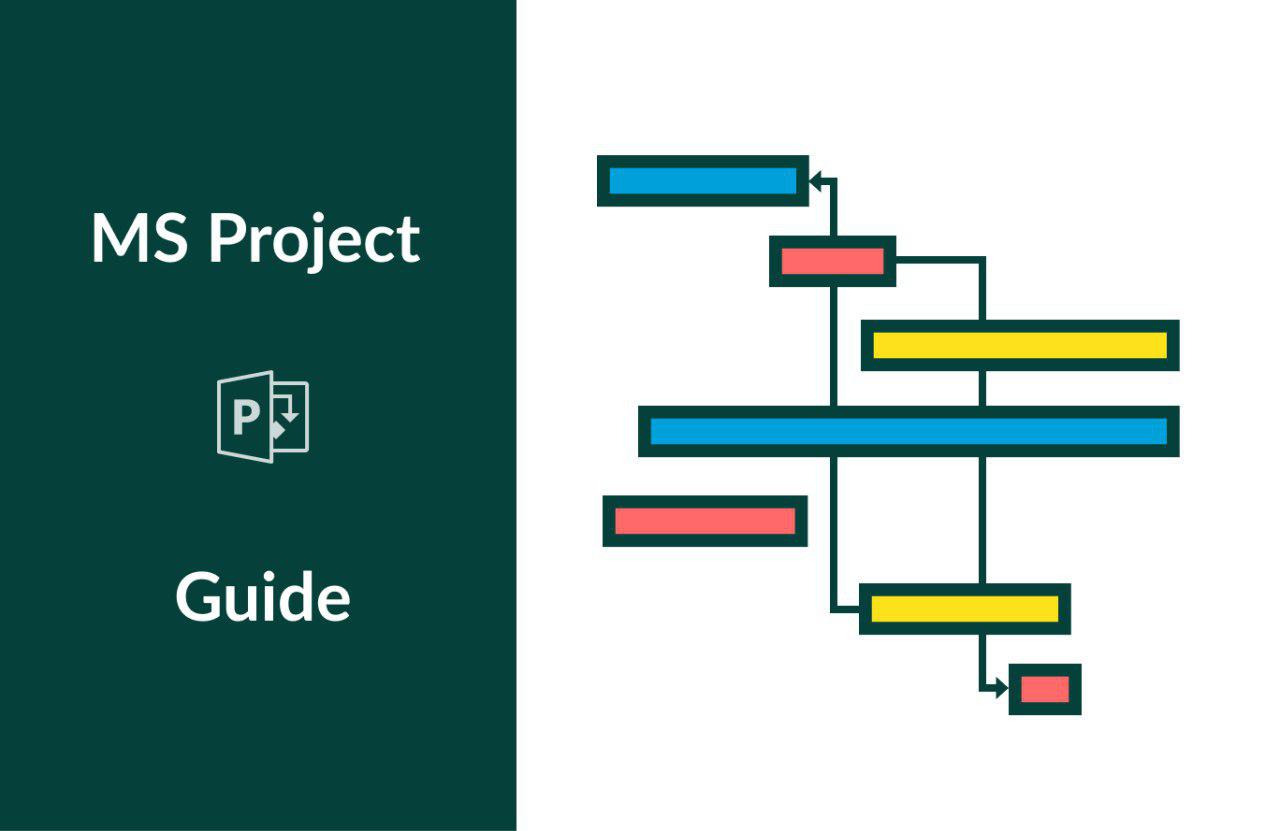Resource Leveling Is Only Used on Projects Which Are Resource-constrained
If the goal is to keep the leveled schedule within the project finish constraint then the resource leveling solution may indicate that the project requires more resources than made available. Generally we try to limit the set of solutions.

Fundamentals Of Scheduling Resource Leveling
Compare and contrast time-constrained and resource-constrained projects.

. Shared or critical resources are in limited quantities. In resource leveling you are asked to optimize the limited resources given to you. Project managers are becoming increasingly aware of the importance of resource-constrained scheduling RCS.
This is done by adjusting the scheduled dates of project activities. Resource leveling answers the question of when you will be able to complete the project with the given resources. FALSE Practitioners have attacked the utilization problem using resource leveling techniques that balance or smooth demand for a resource.
Most projects are time-limited. However if the contractor has been delayed for reasons outside of their control resource-constrained leveling will prevent the occurrence of resource over-allocations and most likely will result in a delay to project completion. The result is a realistic schedule one with a much higher chance of getting followed than a non-resource-optimized schedule.
Resource leveling and resource optimization in general gives you a systematic way of incorporating project management resource constraints in project schedule planning. Resource leveling or smoothing is only used on projects which are resource constrained FALSE Resource bottlenecks are one of the three more common problems encountered in managing multi-project resource schedules. Therefore it makes sense to adjust resources in a way that does not delay the project finish date.
Not only must our schedules be time-feasible by honoring logical task dependencies they must be resource-feasible by honoring resource constraints. Here the schedule is not fixed. True False Resource leveling or smoothing is only used on projects which are resource constrained.
Resource leveling completely provides the scheduler with the worst-case scheduling finish date for resource-constrained projects. Resource leveling This is used when scheduling the production of available resources is limited and needs to be used optimally. True False In a resource-constrained project the completion date is most likely to change.
When you level resources the leveling process does not extend the project duration. Resource leveling can be challenging for project managers as it requires balancing the demand for the same resources across multiple projects. Just as logical task dependencies can block a tasks execution forcing the task to wait for predecessor.
Time and Resource Constrained Projects. Resource smoothing This is used when time constraints are the biggest factor blocking production. In order to complete the project with a limited amount of resources you lengthen the project schedule.
For larger networks and multiple resources resource leveling becomes extremely complex far be-. Project crashing and resource leveling. Constrained leveling should be used in order to maintain the contractual completion date.
Projects are typically classified as time-constrained or resource-constrained. In your response discuss effective methods for scheduling time- or resource-constrained projects and the impact these. If the network is not too large and there are only a few resources the leveling process can be done manually.
Resource leveling or smoothing is only used on projects which are resource constrained. A project management method called resource leveling is used to manage resource constraints. According to the Project Management Body of Knowledge PMBOK Guide resource leveling is defined as A technique in which start and finish dates are adjusted based on resource constraints with the goal of balancing the demand for resources with the available supply.
Resource leveling is a technique used to adjust the project schedule based on resource availability and. Resource leveling is sometimes called Resource Constrained Scheduling RCS. Resource planning becomes a critical tool to document what skillsets are currently within your team what gaps exist that can present development opportunities and to highlight constraints that need to be resolved otherwise.
This includes when a resource is not available for a certain date range when it has to be shared with other teams or when the demand exceeds the supply. The idea is to finish a project on time while avoiding peaks and dips in resource demand. There are several methods to employ.
Whenever we use project scheduling software such as Microsoft Project to level resources in a schedule we get a single solution. If resources are not available the overall project duration may change mostly it extends. Most importantly developing a solid understanding of your resources and their proficiencies will allow you to.
Resource leveling is extending the project schedule to complete the project with the available limited. This may sometimes delay a projects completion date. As the guide explains resource leveling can be used when.
However being presented with just one resource leveling solution can be misleading. For any unleveled project schedule there is an infinite number of resource-feasible schedules. The purpose of resource leveling is to get the most out of available resources while working within the projects time cost and scope constraints.
Resource leveling is defined as A technique in which start and finish dates are adjusted based on resource constraints with the goal of balancing demand of the resources with available supply. If the goal is to execute the project with the available resources then the resource leveling solution may indicate that the project requires more time to finish than originally planned. Resource leveling is a procedure that can be used for almost all projects whether or not resources are constrained.
Resource leveling is used when there is resource scarcity. Resource leveling is used to remove over-allocation of project resources. Resource leveling is sometimes called resource constrained scheduling RCS.
True False Resource bottlenecks are one of the three more common problems encountered in managing multi- project resource schedules.

What Is Resource Leveling Techniques And Examples Asana
Resource Leveling Vs Resource Smoothing At Level

Ecosystems Guided Practice Print Google Versions Teaching Close Reading Guided Practice Middle School Science Resources

How To Level Resources In Ms Project

How To Level Resources In Ms Project

What Is Resource Leveling Techniques And Examples Asana

Resource Leveling Vs Resource Smoothing At Level

Project Milestone Development Checklist Project Management Templates Checklist Project Management

What Is Resource Allocation 6 Best Practices For Project Managers

Fundamentals Of Scheduling Resource Leveling

How To Level Resources In Ms Project

How To Level Resources In Ms Project

How To Level Resources In Ms Project

Figure 7 From Prioritization Based Taxonomy Of Devops Challenges Using Fuzzy Ahp Analysis Semantic Scholar Taxonomy Key Success Factors Analysis

What Is Resource Leveling Techniques And Examples Asana

Fundamentals Of Scheduling Resource Leveling



Comments
Post a Comment